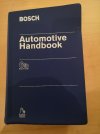Droverunner
Senior Member
- Joined
- Aug 2, 2017
- Messages
- 1,018
- Reaction score
- 768
- Location
- West Cambridgeshire
- Your Mercedes
- 2007 CLK 220 CDi Sport. 2014 S-Max 2.0TDCi.
Can anyone explain how the brake assist system works... as in the type fitted to my 2012 Viano not the latest active type. I know it's effect... it's what does what in the mechanical/hydraulic/electronic sense that interests me.





